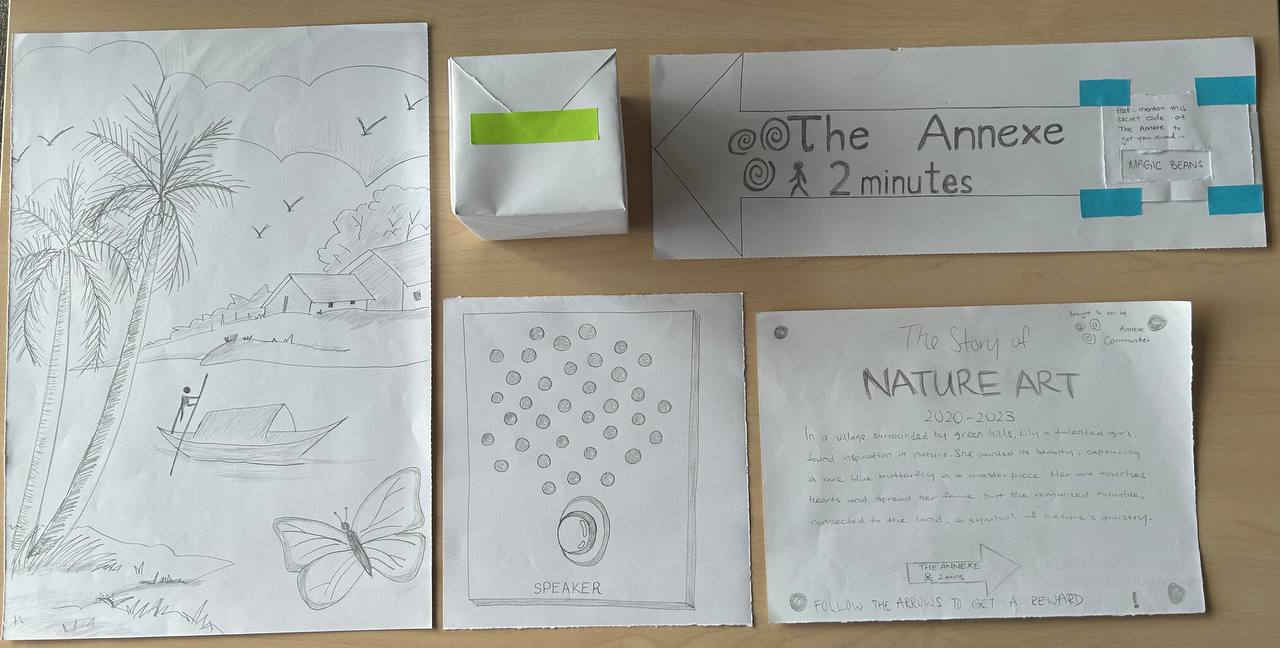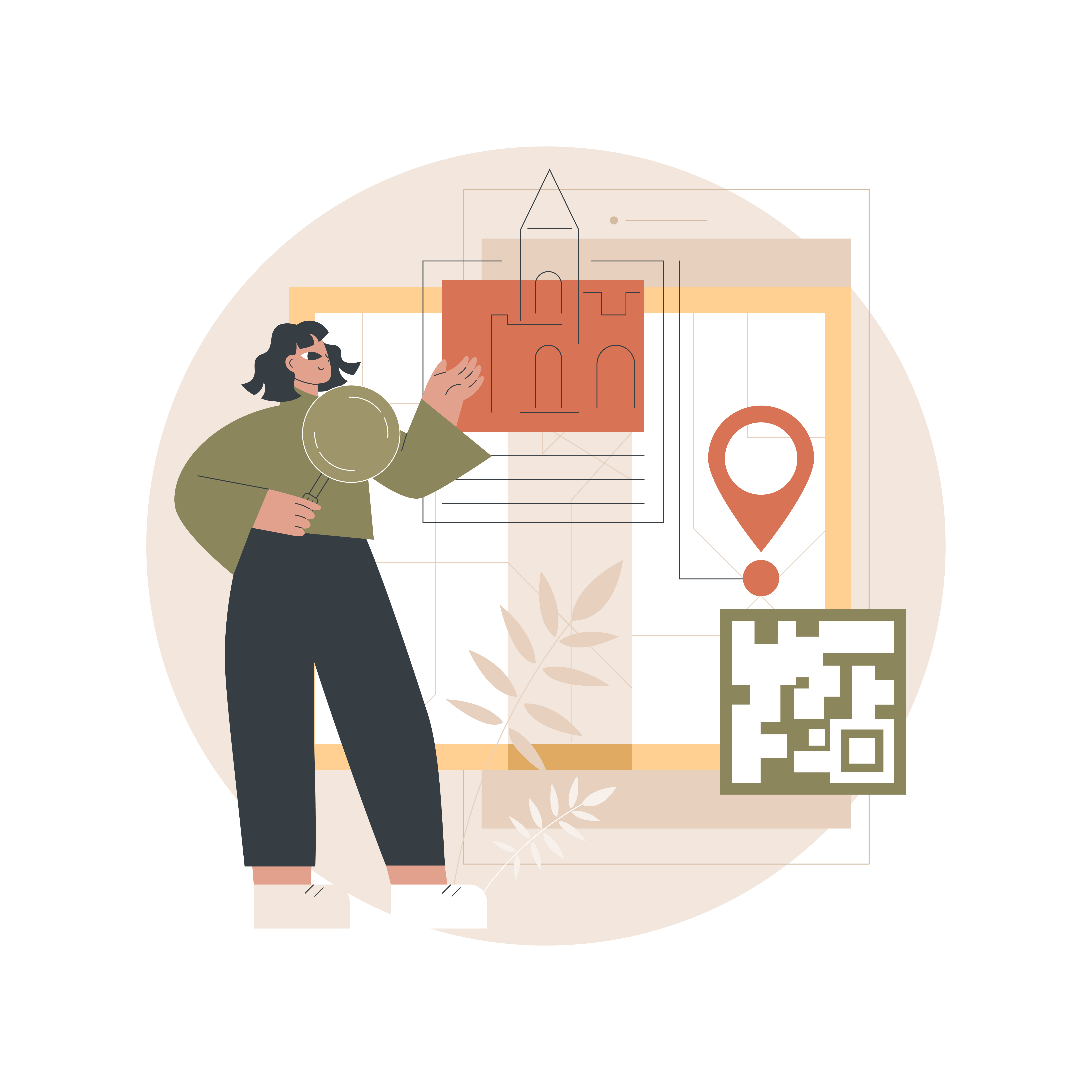
Applying Integrative Thinking and First Paper Prototype
Today, we learnt about Integrative Thinking and deliberately applied it to our project. The purpose of using this model is to take our opposing brainstormed ideas, identify their benefits through the point-of-view of different stakeholders, and produce a more unexpected, creative solution that reaps the benefits of both ideas.
Recap of our Problem:
How can we effectively showcase and share information on murals and art pieces made by the community?
Yesterday, we identified some ideas (see Day 5’s Dailies).
As we continued with our paper prototypes today, we identified the following 3 pairs of opposing models:
1. Audio description of the art piece, with the push of a button vs Plaque with written description on the art piece.
This is part of our solution as we want to showcase the stories behind the art piece to visitors.
2. Arrows leading to The Annexe building vs Coordinates of The Annexe building on the plaque.
This is part of our solution as we want to showcase the stories behind the art piece to visitors.
This is part of a “physical treasure hunt” aspect in our solution as we want to bring more visitors to The Annexe building, where they can learn firsthand about the activities going on and interact with the community members there to learn about their experience.
3. Secret code at the end of the audio description vs Secret code printed out and placed somewhere easy to find (on the second arrow).
This part of the solution complements the bringing of more visitors to The Annexe building, this is to provide incentive for people to visit.
We resolved the tensions between these pairs of opposing models and came up with the following new ideas:
1. Have both an audio description of the art piece and a plaque.
The audio description can be used to share stories (for a more personal touch as compared to words on the plaque), 1 recording per art piece, each limited to 1 minute to keep users’ attention and make it easy for people to infer the context even if they only listened to part of the recording.
The plaque can display a concise description of the art piece, displaying only the most important message to be conveyed.
2. Use only arrows leading to The Annexe building, since it gives more of an adventurous element.
Partner with shops or restaurants nearby to display the arrows on their window/property such that the arrows will not be damaged by the public, and are easily maintained.
3. Have a secret code that is written and pasted on the second arrow in the “physical treasure hunt”.
The first arrow will be on the plaque at the art piece’s location, the second arrow will be nearby, so it is easy to spot and find the code.
Once users know of such an incentive, they may be more compelled to visit the Annexe building.
People can mention the code at The Annexe when they visit to receive a reward (to be discussed with Jane, maybe something along the lines of a discounted drink at the Annexe’s cafe).
This code should change fortnightly, so as to keep the spirit of adventure alive.
Details of our Integrative Thinking Exercise can be found here.
Tomorrow, we will have a meeting with Jane at The Annexe Communities to let her experience our first paper prototype.
Summary of our prototype:
The mural is to be (hypothetically) set up as a Geocache location. We will begin by showing Jane the Geocache app, and attempt the navigation from the Annexe building to a nearby geocache, to let her understand how it appears to users (we will not need to actually find the cache).
At the mural’s location, there will be a plaque describing the mural and a speaker that shares an audio recording of the story or history behind the mural, or how the Partick community was involved in this art piece.
We will also highlight the arrow on the plaque and show her the second arrow (containing the secret code), explaining the motivation behind this “physical treasure hunt” aspect of the solution.

Clearer images of our paper prototype can be viewed here.
From there, we will further improve based on her feedback and shape the final implementation of the solution.



